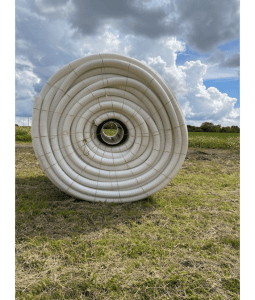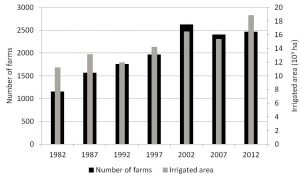There is about 1000 ft. of drain tile per acre (assuming 40ft lateral spacing). Ever wondered if the miles long tile drains in your fields could do more than just drainage? Most would agree that tile drains do more than just draining the fields. My recent article in Ohio’s Country Journal’s December Issue will “dig deeper” and revisit what all a drainage system can do? If you can think of more than what’s in this article, send us a note!

Here are some glimpses of what you will get to read in the full article…
Primary functions of modern-day drainage: The main purpose of drainage was to bring historically wet soils under agricultural production, with additional benefits of improved human health due to lesser risks of pests and diseases associated with waterlogged or marsh lands. Surface and tile drainage transformed the swamps of northwest Ohio into some of the best farmland in the state. The primary function of a modern-day drainage system is still the same – to remove excess water from land surface and soil profile to sustain and enhance crop production. In arid climates, drainage is essential for salinity control, especially in irrigated agriculture. A July 1982 Newsletter by Mel Palmer, then OSU Drainage Extension Agricultural Engineer describes “Twenty Benefits of Drainage” (available at https://go.osu.edu/20drainagebenefits). Most of these benefits still hold true 40 years later!
Benefit to crop yield and profitability: Long-term research at the Ohio State University showed that compared to lands with adequate surface drainage, subsurface drainage improvements may increase yields by 25-30 bu/ac for corn and 3-12 bu/ac for soybean. This translates into a payback period of 7 to 8 years based on economic price data in recent years. Now one may think, that’s it! The system paid itself off, and there is no need to think about additional benefits. Well, the same system can bring you some additional benefits. Here is how:
The function of drain tiles changes from one season to another. The drainage system that is intended to “Drain” in spring starts to “De-Rain” your fields in late summer! Could you conserve some of that rainwater and soil moisture for the periods when your crops may suffer a drought stress?
The article further elaborates on the following:
- Drainage water management and (sub)irrigation can further boost yield and profitability
- Why haven’t we seen too much irrigation of grain crops in northwest Ohio compared to central and southern Ohio?
- Conservation drainage for improved water quality
Full article is available at https://ocj.com/2022/12/can-drain-tiles-do-more-than-drainage/


